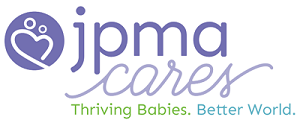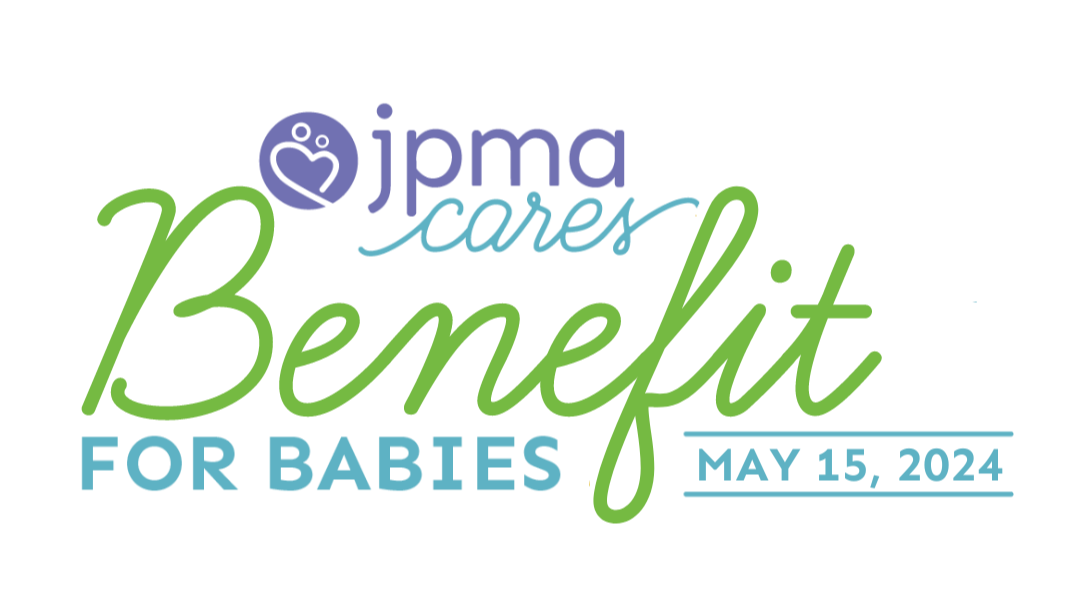睡眠中心
符合当前安全标准的新产品是最安全的选择。但是,如果必须使用旧产品,请确保它们没有被召回、符合当前的安全标准并具有所有制造商的说明和标签要求。最重要的是,如果您必须购买二手婴儿用品或二手衣服,请务必谨慎和安全,并做出最佳判断。如果您不确定任何用过的婴儿产品的安全性,最好购买新的或寻求替代品。查看下面每个可扩展部分中的提示以了解更多信息。
Sleep Safety
The safest place for an infant or child to sleep is in a fully functional, properly assembled, JPMA Certified crib, bassinet, cradle, play yard, bedside sleeper or toddler bed. Creating a safe sleep environment for baby is the best thing you can do to ensure the first years are happy and healthy. Each year, hundreds of deaths occur when children are placed in a sleep environment that is not specifically designed for children.
With some careful planning, naptime and nighttime can be a pleasant experience for both you and your baby. Make every sleep a safe sleep!
Follow these guidelines to create a safe sleep environment for baby:
- As mentioned above, the safest place for a baby to sleep is in a fully functional, properly assembled, JPMA Certified crib, bassinet, cradle, play yard, bedside sleeper or toddler bed. Before you use a sleep product, check to make sure it has not been recalled.
- You should never purchase or use secondhand sleep products, as they may not meet the most current safety standards.
- Drop-side cribs are no longer available for purchase and should NOT be used.
- Make sure there are no missing, loose or broken parts or improperly installed screws, brackets or other hardware on the crib or the mattress support. Check the stability and hardware on the crib often. Do not substitute hardware. Only use hardware obtained directly from the manufacturer. You can order replacement hardware directly from the manufacturer.
- Always use a properly fitting mattress in baby’s crib, as infants can suffocate in gaps between a poorly fitting mattress and the crib sides or ends.
- Always send in the product registration card that comes with every new product (most crib manufacturers offer this service online as well). Returning the card ensures that the consumer will be notified if the crib is recalled.
Bassinet, Cradle and Bedside Sleeper Safety
While it is perfectly acceptable and safe to introduce your baby to a full-sized crib from the onset, traditionally parents use a bassinet or cradle for the first few weeks or months of a baby's life. If using a bassinet or cradle, be sure to follow these guidelines:
- Consider placing a bassinet in your room during the first few months when your baby needs to be fed throughout the night. Room sharing is an easy way to be within arm's reach without compromising your child's safety by bed sharing.
- Look for a bassinet or cradle with a sturdy bottom and a wide, stable base.
- Follow the manufacturer's guidelines on the appropriate weight and size of babies who can safely use the bassinet or cradle.
- Check screws and bolts periodically to ensure they are tight.
- If the product has legs that fold for storage, make sure locks are engaged.
- Mattress pads should fit snugly and be firm and smooth.
- Never use pillows, blankets, stuffed animals or other extra materials inside the sleep space.
- Swinging cradles should have a way to keep them from swinging once a baby is asleep.
- Look for the JPMA Certification Seal.
Play Yard Safety
Choose a play yard with the correct recommended height and weight of the child. The play yard, including side rails, should be fully erected prior to use. Always follow the manufacturer’s instructions. Follow these guidelines for safe use of a play yard, and remember to apply the same rules to portable play yards:
- Do not add padding or other objects inside the play yard, which permit your child to climb out and could create a suffocation hazard.
- Make sure all latching features of the play yard are in place and secure.
- NEVER leave baby in a mesh play yard if it has a drop side and it is in the down position. The baby could roll into the space between the pad and loose mesh, causing suffocation.
- Check vinyl or fabric-covered rails frequently for holes and tears.
- Don’t tie items across the top of the play yard as they can entangle baby and cause strangulation.
- Infants can suffocate in gaps between a mattress too small or too thick and product sides, or on soft bedding. Never add a mattress, pillow, comforter or padding.
- Don’t put a child in the play yard with attachments above them as it can cause an entrapment hazard.
- Look for the JPMA Certification Seal.
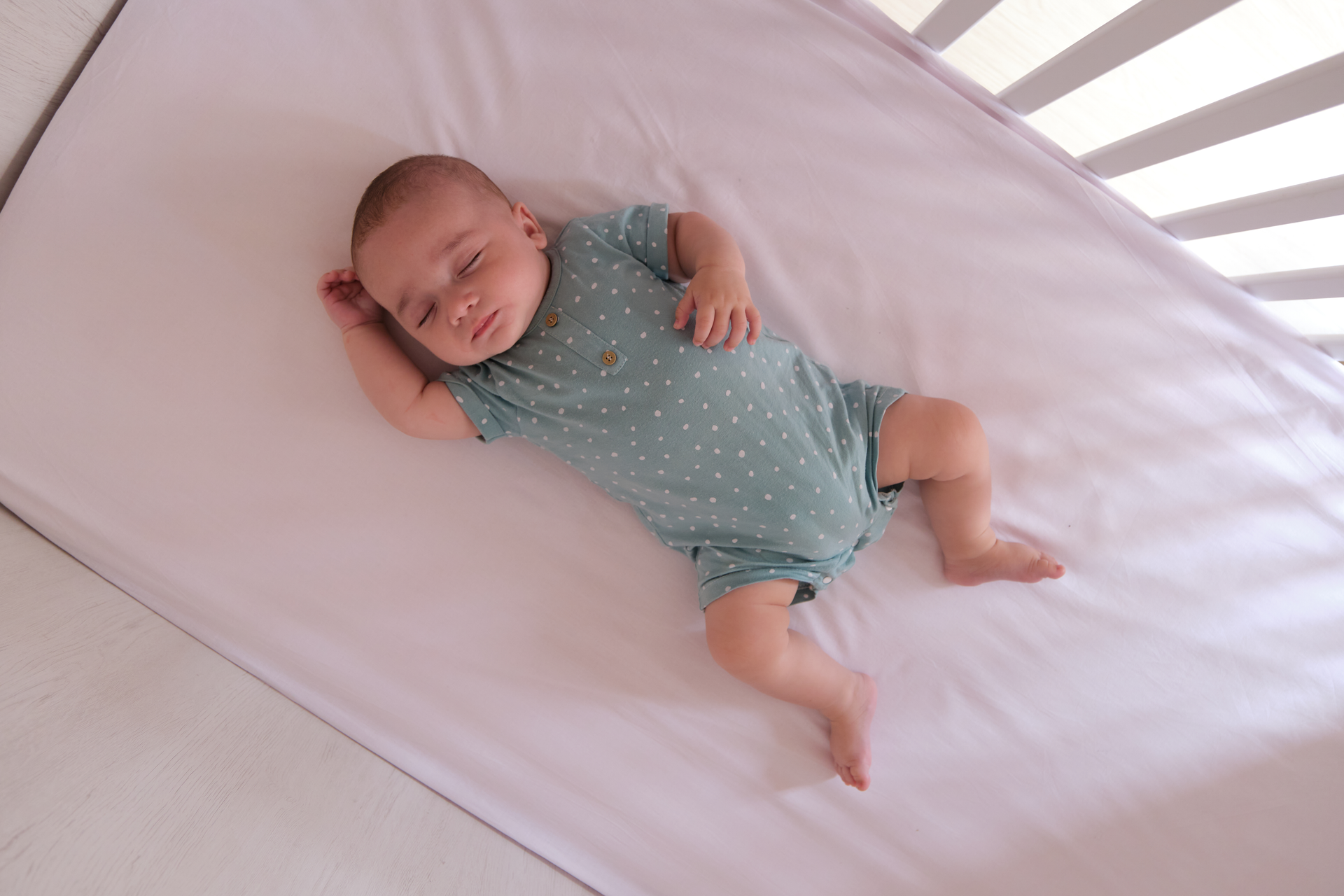
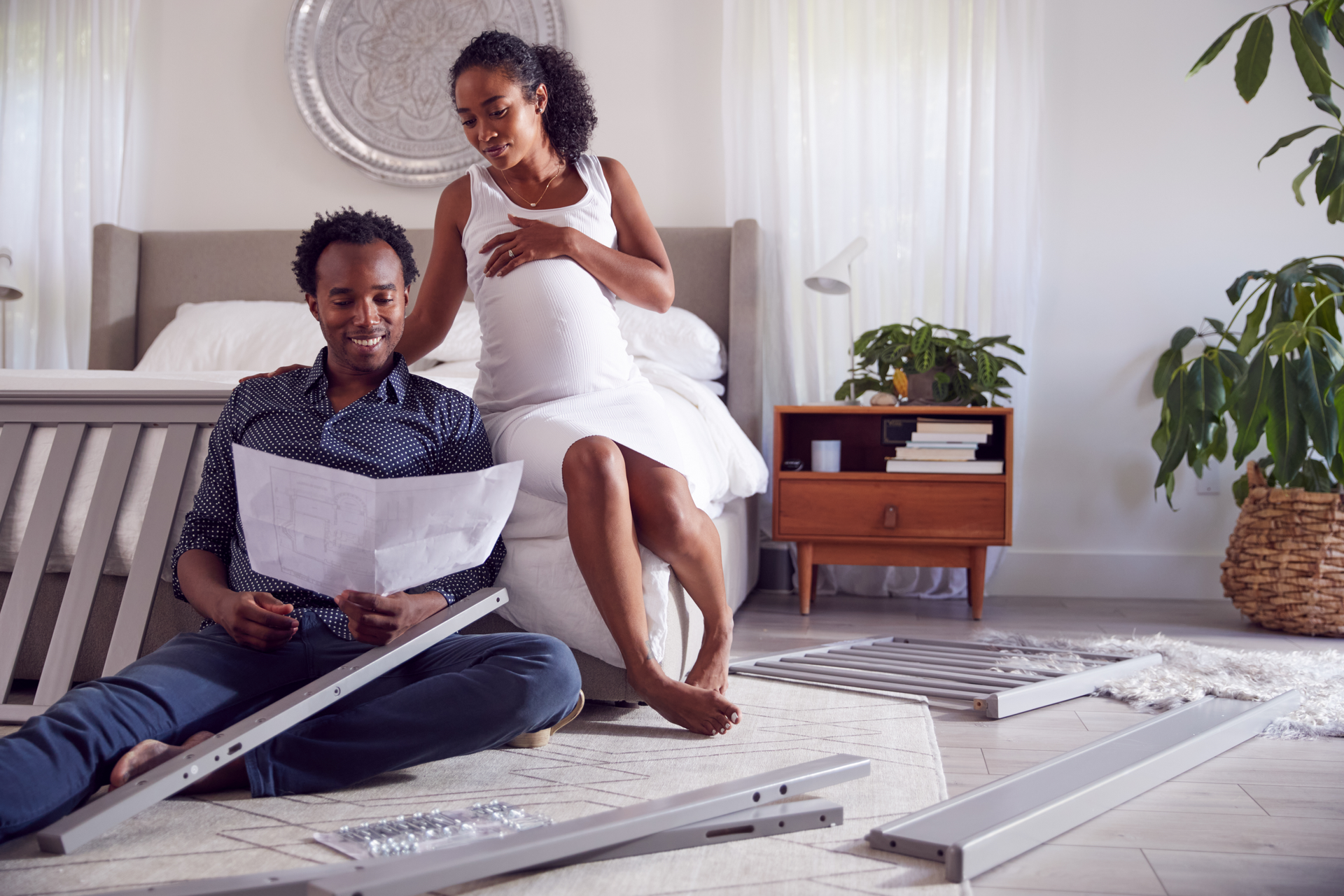
Toddler Bed Safety
When baby is ready to move out of the crib, a toddler bed can be a great transition to an adult bed. Be sure to follow these guidelines for toddler beds:
- Check the joints periodically to make sure they are not loose.
- Choose a bed that is low to the ground so that there is less chance of injury if your child falls. Place the bed safely in the room away from windows, heaters, wall lamps, drapes and blind cords.
- Place the headboard against the wall rather than the side of the bed so that your child can't become trapped between the wall and the bed.
- Look for the JPMA Certification Seal.
Portable Bed Rail Safety
Portable bed rails are a great solution when your toddler transitions from crib to toddler bed (or big kid bed). Be sure to follow these guidelines when using portable bed rails:
- Always follow the manufacturer's instructions for assembly and use.
- Bed rails are not designed for infant use, so do not use them in place of a crib.
- Use a bed rail only with a standard innerspring mattress and box spring.
- Do not use a bed rail on a bunk bed, water mattress or bed without a box spring.
- Be sure to keep the bed rail firmly against the mattress when in use to prevent dangerous gaps.
- Look for the JPMA Certification Seal.
Maintenance and Storage
When cribs, bedside sleepers, bassinets, play yards or toddler beds are assembled to the manufacturer’s instructions and used properly, they provide a safe and comfortable environment.
To ensure the safety of these products for current and future use, follow these guidelines:
- Check screws and bolts periodically to ensure they are tight and there are no missing, loose, broken or improperly installed screws, brackets or other hardware.
- Follow the manufacturer's guidelines on the appropriate weight and size of babies who can safely use the product.
- If the product has legs that fold for storage, make sure locks are engaged.
- Make sure there is no cracked or peeling paint, splinters or rough edges.
- Make sure all features of the product are in place securely.
- Check vinyl or fabric-covered rails frequently for holes and tears.
- When storing your product for future use, save the instructions and parts and keep them with the product in a cool, dry place. Often manufacturers post or attach instructions to the mattress platform so that they are easy to find when the product is re-assembled for later use. Instructions can often be found on the manufacturer’s website.
- Although sentimental, you should not accept hand-me-down products, as they may have been recalled, have missing or broken parts or hardware, or may not meet current safety standards.
Did you know? It’s a great habit to inspect your baby’s sleep area every time the sheet is changed.
Bedding Guidelines
Decorating the nursery is a favorite project for new parents and caregivers. Bedding must always be used as instructed by the manufacturer to help ensure baby’s safety.
Here are some bedding guidelines when setting up your nursery:
- To reduce the risk of SIDS/SUID, pediatricians recommend healthy infants be placed on their backs to sleep.
- ALWAYS use a tight-fitting crib sheet.
- NEVER place additional padding under an infant. Only a tight fitted sheet, mattress pad and/or waterproof pad should be used under the baby.
- NEVER place infants to sleep on pillows, sofa cushions, adult beds, waterbeds, beanbags or any other surface not specifically designed for infant sleep.
- Remove pillows, blankets and pillow-like stuffed toys from the crib when infants are sleeping. NEVER place additional padding under an infant.
- Do not overdress your baby. Consider using a sleeper, wearable blanket or other sleep clothing as an alternative to any covering.
- For newborns, consider swaddling. Discontinue swaddling when infants show signs of rolling over or can break free from the swaddle blanket or commercial products designed for swaddling.
- Check periodically for loose threads or stitching, which could cause gagging or choking.
Did you know? The crib mattress should fit snugly with no more than two fingers, or approximately one-inch width, between the edge of the mattress and the side of the crib.
Creative Nursery Options
Consider these creative options for using beautiful blankets, pillows and quilts:
- Hang blankets on the wall as art. It's a great place to store them for the first few years until your toddler is ready to use them in their toddler bed.
- Hang the blanket on the back of your glider/rocker! A blanket comes in handy to keep your legs warm during night feedings.
- Pillows are great on gliders to help support your back or arms during feedings.
- When your toddler is old enough, pillows are great on the floor for a reading retreat before bed.
- Another great use for cute blankets and comforters is as a "tummy time" mat when your baby is awake and playing. Tummy time is important to strengthen baby's upper body muscles and prevent bald spots on the back of the head.
Secondhand or Heirloom Products
Whether by choice or necessity, parents are increasingly buying secondhand products. At garage sales, auctions, thrift stores, or from friends and family, parents are finding ways to cut costs on baby gear and reduce their environmental impact.
Cribs and bassinets are popular hand-me-down products because they often carry sentimental value if they’ve been passed down through generations. There have been great advancements in crib safety over the past 30, 20 and even 10 years. It is really important to check that the crib or bassinet meets current safety standards such as crib slat width and corner post height just to name a few. Hand-me-down cribs and bassinets have a greater chance of missing parts, since they’ve most likely been reassembled numerous times and traveled.
Did you know? Age is a factor in the safety of any crib. At a minimum, the CPSC recommends that you not use a crib that is older than 10 years. If you are on a budget, buying secondhand is a good alternative. Note that in many communities, there are organizations that provide free safe sleep options for families in need. If you’re planning to use a secondhand or hand-me-down crib, it is vital you follow a few basic rules to ensure you aren’t compromising safety for price:
- Parents should check to see if a recall has been issued and/or if repair parts are available for a product that is being reused. Visit www.recalls.gov for recall information.
- Don’t forget to frequently inspect products for missing hardware, loose threads and strings, holes and tears.
- Be sure to look for the JPMA Certification Seal for added assurance the product was built with safety in mind at the time it was manufactured.
- Prior to using a hand-me-down product, be sure that all manufacturer’s instructions and labeling are still intact and legible.
- Put safety before price—even if it’s the deal of the century! This means inspecting the product in detail. Don’t buy any product if it has anything “out of sorts.”
- Do not purchase products at a garage sale, thrift shop or other online auction sites, as products sold are not checked for recalls or regulated by the government or industry.
- Items sold at secondhand locations have a higher chance of having missing, broken or loose parts.
- Traditional drop-side cribs cannot be made or sold; immobilizers and repair kits are not allowed. This includes use at childcare facilities.
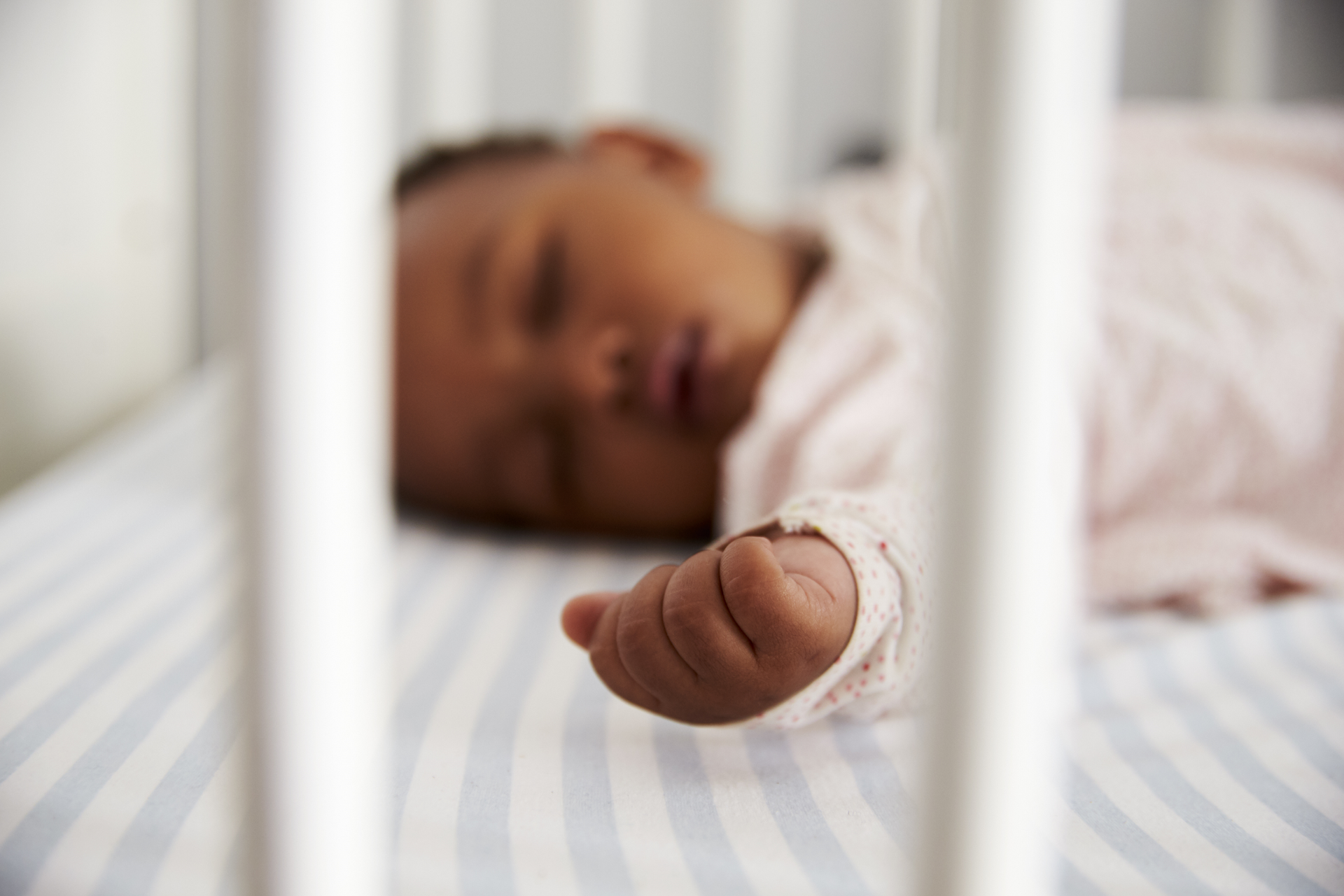
JPMA 认证印章
始终寻找 JPMA 认证的产品,让您的选择更有信心。 JPMA 目前对 29 个产品类别的 2,000 多种产品进行了认证,其中包括婴儿车和婴儿车。每个经过认证的产品每年以及在任何材料更改后都会在独立实验室进行样品测试,以确保其满足最高的安全要求。要确认产品认证状态,请在产品包装上查找 JPMA 认证印章,或在 JPMA 认证目录中按产品类别搜索。
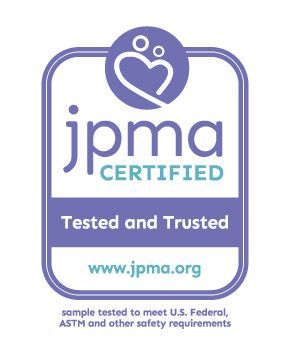
婴儿安全睡眠法
自 2022 年 11 月 12 日起,无论生产日期如何,该法案中定义的“婴儿倾斜睡床”和“婴儿床保险杠”均被视为《消费品安全法》第 8 条规定的禁用危险产品。该法律规定销售、要约销售、制造销售、商业分销或向美国进口任何上述产品均属非法。
根据该禁令,“婴儿倾斜睡眠床”是指睡眠表面倾斜度大于 10 度的产品,旨在、销售或设计用于为 1 岁以下婴儿提供睡眠环境。
“婴儿床保险杠”包括旨在覆盖婴儿床侧面的任何材料,以防止任何婴儿床占用者因撞击婴儿床侧面而受伤,或防止部分或完全进入婴儿床侧面的任何开口,以防止婴儿床被损坏。防止乘员身体的任何部分被任何开口卡住。这包括带衬垫的婴儿床保险杠、支撑/无支撑的乙烯基保险杠防护装置和垂直婴儿床板条盖。它不包括无衬垫的网状婴儿床内衬。
